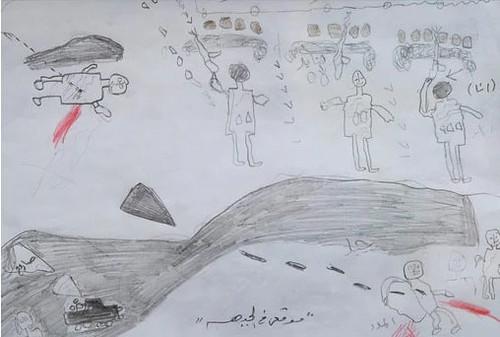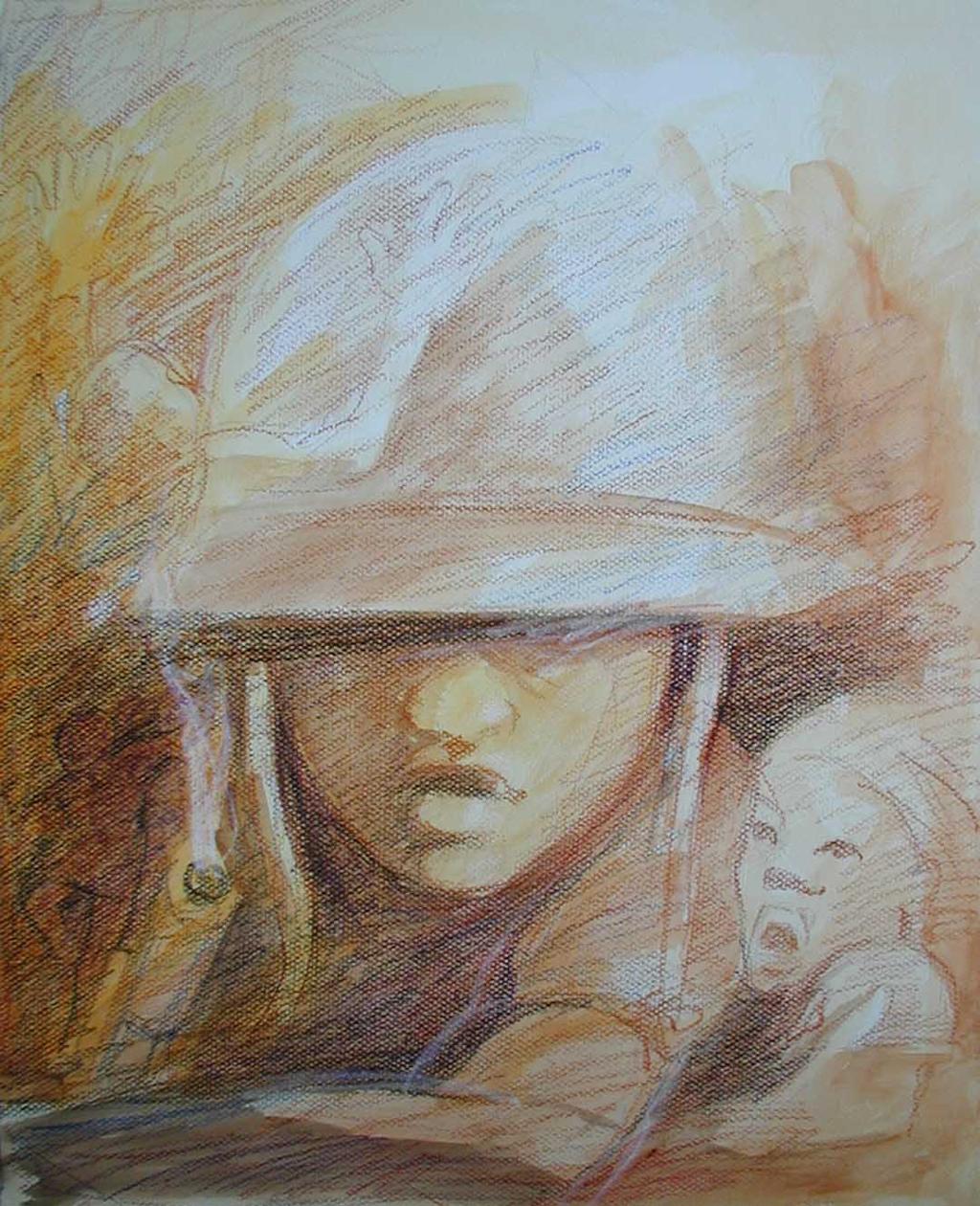Child Soldiers
Child Soldiers

It is impossible to accurately calculate the number of children involved in armed conflicts in the world today. According to the United Nations there are about 250,000 children under the age of 18 serving in government forces or armed rebel groups. Most child soldiers are aged between 14 and 18. However, in some countries, children as young as seven have been involved in armed conflicts.
Child soldiers are often associated with armed conflicts in African countries, such as Somalia, South Sudan and the Democratic Republic of the Congo. However, the fact is that this is a global problem, not just an African one. Child soldiers are used in almost all regions of the world, and on the list of countries using child soldiers today you will find countries like Afghanistan, Myanmar, Syria and Yemen. The participation of child soldiers has been reported in at least 20 armed conflicts in almost every region of the world.
Children are recruited in different ways. Some enlist as a result of poverty and lack of work, and in war-torn regions it is often the last option to survive after family, social and economic structures have collapsed. Children are most vulnerable if they are poor, separated from their families, displaced from their homes and living in combat zones. A military unit can in fact be something of a refuge, serving as a kind of surrogate family for a child who has no family. The military group may seem a secure place for a child and they may join if they believe that this is the only way to guarantee regular meals, clothing or medical attention. Jacques from the Democratic Republic of the Congo was only 10 years old when he joined the army:
I remember the day I decided to join the mayi-mayi. It was after an attack on my village. My parents, and also my grand-father were killed and I was running. I was so scared. I lost everyone; I had nowhere to go and no food to eat. In the mayi-mayi I thought I would be protected, but it was hard. I would see others die in front of me. I was hungry very often, and I was scared. Sometimes they would whip me, sometimes very hard. They used to say that it would make me a better fighter. One day, they whipped my 11-year-old friend to death because he had not killed the enemy. Also, what I did not like was to hear the girls, our friends, crying because the soldiers would rape them.
Some have witnessed family members being tortured or killed by government forces or armed groups, and join up as a result of this, while others are brutally abducted by armed groups and forcibly recruited. There are many examples of recruits who are arbitrarily seized from their homes, the streets, or even from schools and orphanages, when armed militia or army cadres roam the streets, picking up anyone they encounter. Sometimes children are even forced to kill their parents or commit other atrocities against their family or neighbours. Such practices help ensure that the child is "stigmatized" and unable to return to his or her home community; in this way the military group will have a loyal soldier for years to come. A 17-year-old Colombian boy who was only seven years old when he joined a paramilitary group explained what he had to do to survive:
They give you a gun and you have to kill the best friend you have. They do it to see if they can trust you. If you don't kill him, your friend will be ordered to kill you. I had to do it because otherwise I would have been killed. That's why I got out. I couldn't stand it any longer.

A child soldier may be involved in any part of the battle. Once recruited, child soldiers may serve as cooks, guards, messengers or spies, and often they are reduced to being mere slaves for their commanders. The children might start out in indirect support functions, but it does not take long before they are pressed into combat and forced to the front line. In this position, their inexperience and lack of training leave them particularly vulnerable. Sometimes they are sent into minefields ahead of older soldiers and their leaders, and there are also numerous examples of children who have been used for suicide missions. This has happened several times in Afghanistan and Nigeria, and we know that children as young as six have been used as bomb carriers.
About 40% of all child soldiers are reported to be girls. The girls are often given many of the same military tasks as the boys. In addition, they also become victims of sexual abuse, and in many cases they are given to military commanders as "wives". A Honduran girl gave this account of her experiences as a child soldier:
At the age of 13, I joined the student movement. I had a dream to contribute to make things change, so that children would not be hungry... Later I joined the armed struggle. I had all the inexperience and the fears of a little girl. I found out that girls were obliged to have sexual relations to alleviate the sadness of the combatants. And who alleviated our sadness after going with someone we hardly knew?... There is a great pain in my being when I recall all these things... In spite of my commitment, they abused me, they trampled my human dignity. And above all, they did not understand that I was a child and that I had rights.
Children make good soldiers since they are often easily manipulated. They have not learnt the difference between right and wrong and they are emotionally and physically immature. Often they do not understand the consequences of what they do. Alcohol and drugs reinforce these qualities and are often used to subdue and manipulate the children. It also has a double effect since it makes the child dependent upon the group which has recruited him or her.
Once a conflict is over, new challenges await the child soldiers. For many, the return to civilized society can be more difficult than the actual act of becoming a child soldier. After a conflict, many soldiers struggle with nightmares, anxiety attacks and strong feelings of guilt, and all these things have to be processed before they can move on in life. A 16-year-old girl from Central Africa describes her troubled feelings in this way:
I feel so bad about the things that I did. It disturbs me so much that I inflicted death on other people. When I go home I must do some traditional rites because I have killed. I must perform these rites and cleanse myself. I still dream about the boy from my village that I killed. I see him in my dreams, and he is talking to me, saying I killed him for nothing, and I am crying.
Also, many children have become dependent on alcohol or narcotic substances that they have received from their military leaders, and they need help to rid themselves of the addiction. Another challenge is that many children have lost contact with their families and need help to locate them. They also need help to get back to school or receive vocational training.
Demobilization, disarmament and reintegration (DDR) programs specifically aimed at child soldiers have been established in many countries with the aim of helping former child soldiers to re-enter civilian life. However, many children have no access to these programs. The programs often lack funds and adequate resources, and sustained long-term investment is needed if they are to be effective. Also, many of the children are prevented from returning home since families and friends do not want anything to do with them. This leaves them very vulnerable and without support, and many are at risk of re-recruitment.
This is especially a problem for the girl soldiers. During conflicts, they are frequently subjected to rape and other forms of sexual violence, which again leads to shame and stigmatization by their home communities when they return. This situation is even more complicated for girls who have become married or pregnant. Unfortunately, they are frequently not even categorized as soldiers, and are often deliberately or inadvertently excluded from these rehabilitation programs.
The majority of the countries in the world today accept that the issue of child soldiers needs to be addressed, and the United Nations has been fighting for the rights of children in different ways for many years. In 1989, the United Nations General Assembly adopted the Convention on the Rights of the Child. This was a landmark for human rights, since for the first time there was a treaty that addressed the particular needs of children. To date, all the members of the United Nations are parties to the treaty, with the exception of the United States.
In May 2000, the United Nations took it one step further, adopting an Optional Protocol to the Convention on the Rights of the Child. The particular purpose of this protocol was to address the involvement of children in armed conflicts and to further protect the rights of children in combat zones. The Protocol sets 18 as the minimum age for direct participation in hostilities, for recruitment into armed groups and for compulsory recruitment by governments. Today, more than 170 nations have signed and ratified the convention.
The use of child soldiers in armed conflicts is extremely harmful for the development of poor countries. These countries need a young generation that can work, build and develop their nations. They are the building blocks of future generations. Instead, military conflicts leave these children traumatized and many are also killed as a result. The healing process for the individual child will take decades, and the long-term consequences for the countries involved are devastating. After a conflict is over it may take years to re-build the trust between the population groups, and as a result durable peace, security and development within these countries suffer. It seems that the world has a long way to go before we can say that the problem of child soldiers has been solved. Most likely a new generation will have to grow up before we can declare these countries safe for all children.